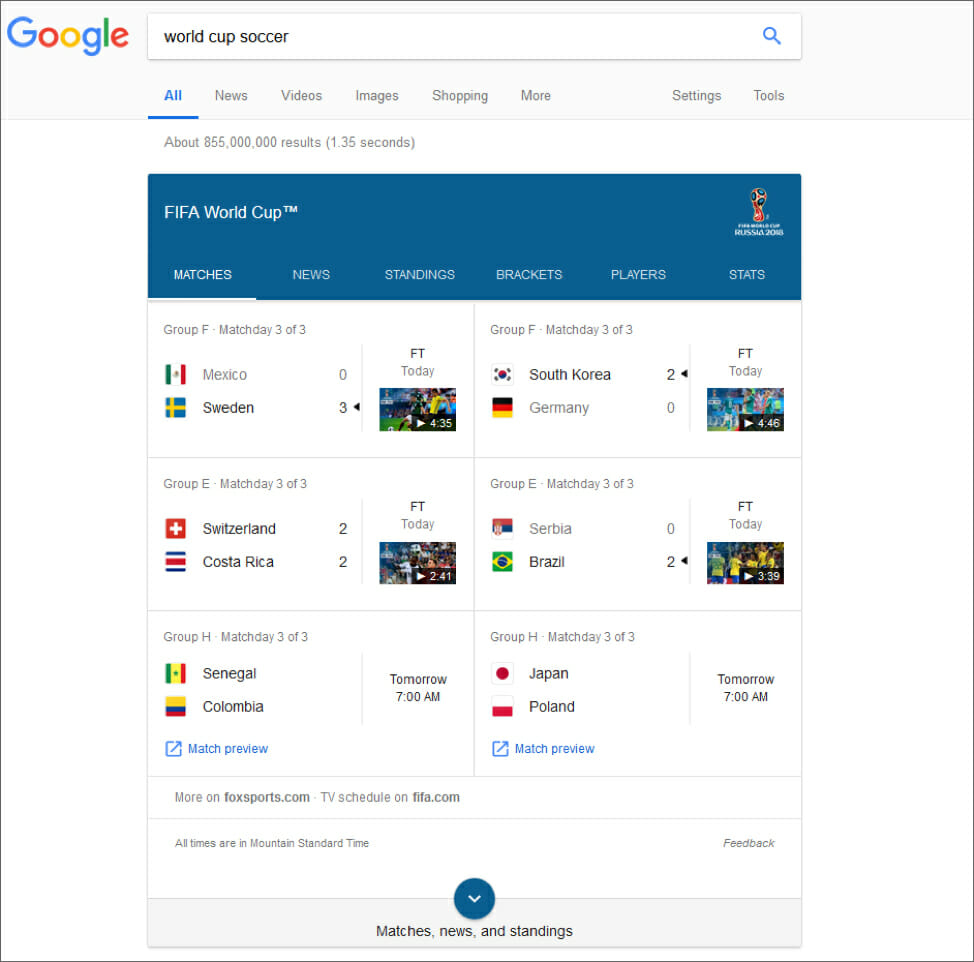
Google’s brief experiment with “zero results” answers – where simple queries would only produce a single, Google-provided result in response – struck many as a bad omen of things to come in the world of SEO.
An example from April of the temporary search engine change:

While the Google zero results experiment appears to be dormant for the time being, it should serve as a sign of things to come. Here, we’ll take a closer look at Google’s new strategies, as well as how demand generation can help you take advantage of the recent changes.
Google Zero Results Show It Aims to Be a One-Stop Shop
As website owners and content creators, you’ve likely noticed that, in recent years, the amount of space dedicated to organic search results on Google’s first page has been shrinking. Sponsored ads dominate the top results now, and they are increasing more indistinguishable from the organic search results.
It’s not just paid ads boxing out algorithmic search results. Google’s own services, such as Google Flights, receive preferential treatment over similar third-party services like Kayak, Expedia and Hotwire.

For example, during the 2018 World Cup soccer tournament, Google users who searched the phrase “world cup soccer” were shown information taken from other websites. Users would find team standings, player stats and upcoming matches, all without ever having to leave the search results page.

Demand Generation Puts Eyes on Your Brand
It’s clear that the search engine giant is focused on taking a larger and larger portion of total web traffic and keeping it planted right on its own web properties. If it doesn’t have to direct attention your way, it won’t. The only winning move is to build so much demand for your brand that Google has no choice but to defer to you in order to satisfy its users.
Many SEO experts are calling this new strategy “demand generation.”
5 Winning Demand Generation Strategies
Here are five of the most effective steps that you can take to increase demand for your brand. When implemented effectively, these tips force Google to shine a spotlight on your products, services or your website in general.
1. Up Your Content Creation Game
Start by asking yourself if you are providing content with original information, or if you’re just rehashing information that users can find elsewhere. Be the first one to shine a light on new trends and data. Or better yet, be the first one to the party by performing and sharing your own original research.
2. Share Your Best Stuff for Free
A key element in building demand for your product or service is cultivating trust between your audience and your brand. One of the best ways to build trust is by providing consumers with your very best stuff free of charge.

This might seem counterproductive, but if your audience knows that you create things that add value to their life, they will be sure to view your brand as a valuable resource in the future. Additionally, those who value your free product, tool, resource or service are more likely to share it with others in their extended network. The recipients of your free giveaway thus morph into de facto ambassadors for your brand.
3. Cultivate Client Reviews
When it comes to demand generation, there is perhaps nothing more valuable than cultivating positive client reviews. The reasoning behind this one should be pretty intuitive. After all, it’s easy to hear a business owner’s big talk and dismiss it as empty bluster. A verified client testimonial, on the other hand, is much more credible, for obvious reasons.
Whether it’s a landing page testimonial, case study or customer interview, the voices of satisfied clients are powerful demand generators and should be part of any complete marketing strategy.
4. Guest Posts Get the Word Out
If you are looking to branch out and reach a new audience, publishing guest posts in popular publications in your space can produce fantastic results. Guest posting is great because you have the opportunity to position yourself as a thought leader in your field while also drawing attention to your own brand.
When guest posting, it is important to remember that publications with a large following will generally only accept content from established writers, so it helps to start by submitting to smaller outlets before working your way up the ladder.
5. Social Media Is King (for Demand Generation)
There are few tools more powerful than social media when it comes to demand generation for your business. By regularly engaging with your audience through channels like Twitter, Facebook and Instagram, you can cultivate a loyal following that associates your brand first and foremost with the product or service you provide.
To make the most out of your social media presence, it is important to constantly test which kinds of posts generate the most response. It’s going to differ from industry to industry, so you will probably have to tinker with it for a while until you find the sweet spot.
Reshares, likes and comments are a great metric to measure a post’s impact, allowing you to zero in on your target audience. And once you know what works, you can make use of automation tools to schedule future postings, ensuring that you share content at the optimal time.
Start Generating Demand Today!
Now, demand generation might not be necessary for every industry, but if you want to thrive in today’s search engine landscape, you now have a better sense of how to get started.


